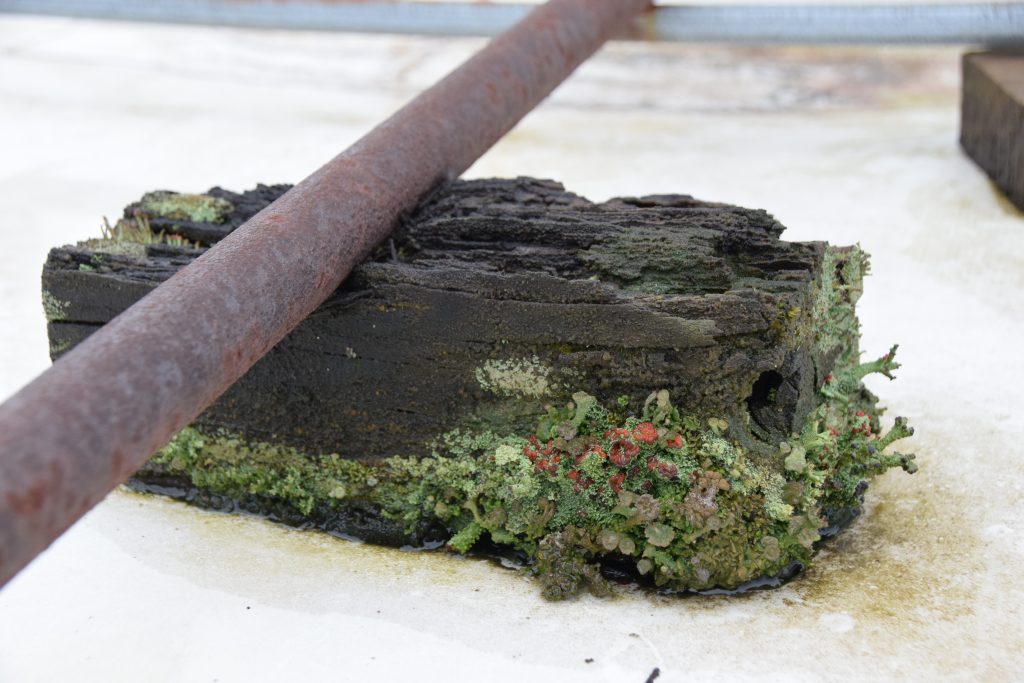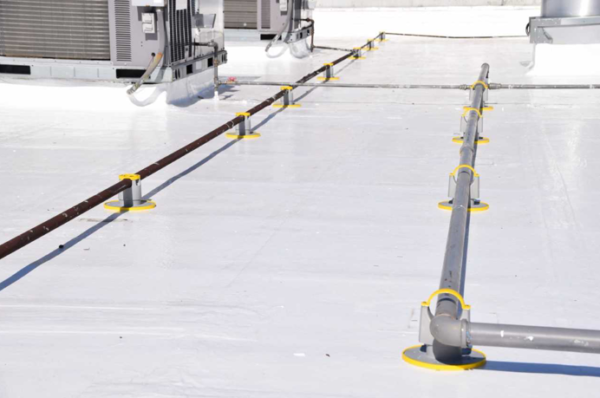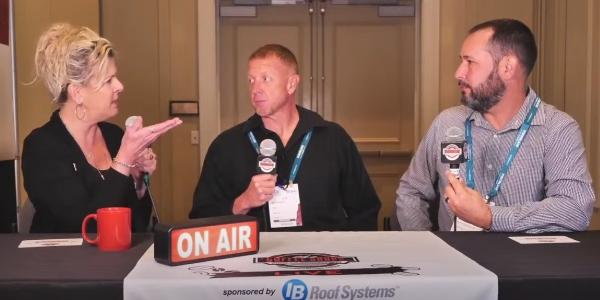No Sleepers on the Job

By GREEN LINK Engineering.
Why wood sleepers are on their way out.
The use of wood sleepers to provide rooftop support for HVAC equipment, pipes, and conduit has been a standard procedure for many years—the method goes way back to the first days when pipes and equipment first began to be installed on roofs. It’s easy to see why. The approach is simple and inexpensive: wood blocks are easily obtained and can be quickly positioned on the roof membrane.
But wood sleepers are on the way out because time has exposed numerous problems. Wood blocks typically have to be replaced over the life of the roof. Even treated wood degrades when impregnated chemicals leach out of wood—there is no greater exposure to the cycles of weather and seasons than the roof, and wood sleepers are in the crosshairs. In time, they will biodegrade attracting fungus, mold, even termites. Weathering also causes mechanical problems: wood splits, cracks and shreds. Changing dimensions of the wood blocks leads to pipe sag. HVAC equipment can begin to tilt which affects the operation of fans and other moving components. Additionally, weight shifts can lead to point loading causing depressions to form in the roof membrane. These in turn become vessels for water and ice, which can lead to membrane tears and leaks.
There is also an environmental issue with treated wood sleepers. The toxic chemicals that serve as biocides could potentially leach out, carried by water into drains and out into surrounding soils.
The replacement of wood sleepers with KnuckleHead supports is easily accomplished. Like wood sleepers, KnuckleHeads can be loose laid, so they are easily installed, and they are lightweight. KnuckleHeads are molded from reinforced nylon, so they are virtually unaffected by weather and seasonal cycles and biological attack. They feature a round base rather than the rectangular base of a wood sleeper, so weight is more evenly distributed.
 Additional benefits dramatically differentiate KnuckleHeads from wood sleepers. They can be height-adjusted simply by rotating the heads. Increased heights can be achieved using extensions which fit snugly into the base. Each unit can support up to 600 lbs. And while units are typically loose laid, they can be bonded, mechanically fastened—or both—to the roof where high winds or seismic conditions may require. Custom engineered accessories are available that can enhance the installation. A flexible polyurethane slip pad that fits snugly under the base serves to protect the roof membrane and prevent the unit from sliding. And caps and straps can be used to secure pipes and struts in the heads. Finally, KnuckleHeads present no toxic threat to the environment. They do not contain chemicals that can leach out from weathering or repeated exposure to water.
Additional benefits dramatically differentiate KnuckleHeads from wood sleepers. They can be height-adjusted simply by rotating the heads. Increased heights can be achieved using extensions which fit snugly into the base. Each unit can support up to 600 lbs. And while units are typically loose laid, they can be bonded, mechanically fastened—or both—to the roof where high winds or seismic conditions may require. Custom engineered accessories are available that can enhance the installation. A flexible polyurethane slip pad that fits snugly under the base serves to protect the roof membrane and prevent the unit from sliding. And caps and straps can be used to secure pipes and struts in the heads. Finally, KnuckleHeads present no toxic threat to the environment. They do not contain chemicals that can leach out from weathering or repeated exposure to water.
KnuckleHeads do not have to be replaced. They will likely outlast the life of the roof itself. Learn more about replacing wood sleepers.























Comments
Leave a Reply
Have an account? Login to leave a comment!
Sign In